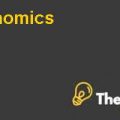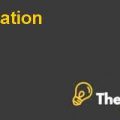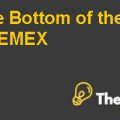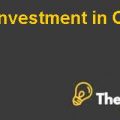
SUMMARY
The increasing globalization requires enhanced interaction among people from diverse beliefs, culture, norms, and ethnic background than ever before. The globalization of world economy and the differences between the several countries present numerous challenges and issues for the organizations such as cultural differences, diversification issues, high competition, unethical standards, inflexible working environment and downsizing. Therefore, profit and non-profit organization need to diversify to become more innovative, creative and open to change. However, global and cultural diversity is one of the biggest and most important challenges that businesses face nowadays(Kelli A. Green).
Diversity in the workplace was started by President Johnson when he signed the 1964 Civil Rights Act. Diversity in the workplace means that the organization is becoming heterogeneous in terms of ethnic background, gender, age, knowledge, culture, nationality, sexual orientation, and occupation. Moreover, diversity is considered as an advantage in this global world, and not as a disadvantage in obtaining the opportunity. Managing diversity involves identifying the value of differences, combating the discrimination, high cost of diversity management, communication barriers, stereotypes, ethnocentrism and prejudice in the workplace. According to the survey, 65% customers’ base has become more diverse in the past ten years (Wylie, 2004).
On the other hand, some of the advantages that come with managing a diverse workforce include a high level of productivity, exchange of innovative ideas and teamwork, and learning and growth. The concept of global and workforce diversity differs from company to company, according to the rules, and regulations that have been stipulated for a particular purpose. However, some of the important factors and attributes need to be taken into account, while adopting the diverse workforce, such as type of company, organizational culture, and company location.
Therefore, it is the responsibility of the managers and leaders to understand the importance of workforce diversity and develop a strategy to blend the organizational culture. Moreover, they should provide mentoring programs to guide the employees and teams on how to access the information. Furthermore, it is the duty of the managers to provide ongoing training and awareness opportunity to the employees to gain more skills and knowledge.
PRACTICAL APPLICATION
Organizational behavior is the identification, evaluation, and application of knowledge about how the employees and groups act in an organization. The objective of the organizational behavior is to build a positive and strong relationship by achieving organizational objectives, people objectives, and social objectives. Following are the leading companies that play a significant role in managing global and workforce diversity as well as sustaining the organizational behavior in the long run.
Coca-Cola is the world’s largest beverage company, which was founded in 1886 by John Pemberton. The global diversity mission of the company is to be recognized for their leadership in diversity, inclusion, and fairness in the workplace. Coca-Cola spends a significant amount of money on mentoring programs and diversity training to educate employees and managers about diversity as well as maintaining organizational behavior. Moreover, the purpose is to minimize the conflicts among the employees and to strengthen their ability to amplify, value and respect, and to drive sustainable business results. Furthermore, the company develops diversity councils and business resource groups in order to progress the company’s efforts towards achieving diversity goals.
According to Dell, diverse workforce enables organizations to understand, analyze and better respond to the needs of its equally diverse customer base. Dell has introduced some mandatory annual online training programs that help employees to understand Dell’s diverse frameworks and values. Moreover, Dell has a flexible working environment to increase employees’ morale levels and ensuring work-life balance has helped Dell’s high potential female to achieve greater success in the workplace. Furthermore, Dell’s management buy-in for ethical and diversity programs have built a more flexible organization(Shin, 2013).
Ford is one of the leading automotive manufacturers in the world. Its vision is to maintain long-term diversity and inclusion environment. Moreover, the company identified five strategies to achieve its vision, which involves diverse workforce, leading the way, the inclusive working environment, work life integration, and building a relationship with key stakeholders. Furthermore, Ford implemented various tools to manage the organization’s behavior in the long-term such as Disabled employees FEDA, Equal Employment Opportunity, GLOBE, and ERGs(Kersten, 2000).
ARTICLE SOURCE
Dike, P. (2013). The impact of workplace diversity on organisations.
ADDITIONAL REFERENCES
Kelli A. Green, M. L. (n.d.). Diversity in the Workplace: Benefits, Challenges, and. Univeristy of Florida.
Kersten, A. (2000). Diversity management: Dialogue, dialectics and diversion. Journal of Organizational Change Management.
Shin, H. Y. (2013). What are the Key Factors in Managing Diversity and Inclusion Successfully in Large International Organizations? Cornell University ILR School.
Wylie, K. (2004). Diversity in the workplace. Business economics - Personnel and Organisation..............
This is just a sample partial case solution. Please place the order on the website to order your own originally done case solution.













